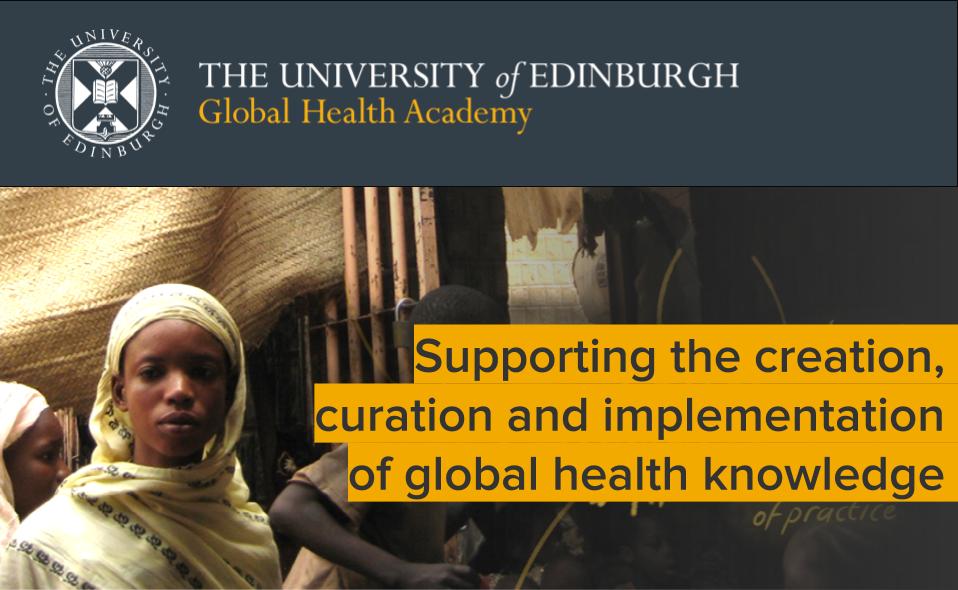Critically Analysing the IFC’s Health in Africa initiative’s opportunistic strategy to reach the poor.
Introduction
In September 2014 Oxfam released a report entitled: Investing For the Few: The IFC’s Health in Africa Initiative. Their report highlights the lack of transparency within the International Finance Corporation’s (IFC) Health in Africa (HiA) strategy and the overall lack of monitoring and evaluative (M&E) institutions.1 Concluding that the IFC has done little to demonstrate the role of the private health sector in pro-equity health system strengthening.1
Earlier in 2014, I had completed my own research attempting to answer: To what extent has the IFC’s HiA initiative improved financial protection and access to quality health goods and services for the poor?
My research objectives were to map the IFC’s HiA activities by workstream, then use peer-reviewed and grey-literature (including World Bank monitoring and evaluation data) to investigate the extent to which HiA interventions (from analysis, to policy, to type of investment) improved health outcomes for the Sub-Saharan Africa’s poor.
This proved to be a difficult endeavour, as the IFC’s lack of transparency in HiA’s operational strategy, access/publication of information, and results frameworks, made it difficult to understand how the IFC was taking an opportunistic approach in HiA’s analytic, policy, and investment interventions to improve financial protection and access to quality health goods and services for Sub-Saharan Africa’s poor.
Lack of Transparency
In Spring 2014 I had requested (via the World Bank and the IFC’s online information request portals) the following documents: (1) A country/client specific operational plans and corresponding Results Measurements Frameworks; and (2) HiA’s Equity Investments Framework. These M&E institutions were chosen for request, as the nature of these documents fall under SECTION III, Information Routinely Made Available by IFC, in IFC’s (2012) Access to Information Policy.2 Within a week of the request, the World Bank responded with directions to forward this request through the IFC portal. Unfortunately the IFC has yet to respond, although had initially promised a response within 30-working days of a request.
Interesting to note, Oxfam (2014) has reportedly requested HiA’s Results Framework, only to be unsuccessful in their request as well. Oxfam (2014) and the Health in Africa Mid-Term Report (MTR) (2012) have both commented on the lack of transparency within the IFC and their trouble with defining HiA’s anticipated results. Leading to difficulties in understanding, measuring, and evaluating HiA’s opportunistic pathway in order to measure the extent to which the HiA initiative is reaching the poor.1,3 The Independent Evaluation Group (2014) have also recognized this lack of transparency and how little the IFC is engaged with creating M&E institutions.4
In line with my own findings, both Oxfam and the MTR have recognized the difficulties in measuring the extent to which HiA was improving financial protection and access to quality health goods and services for Sub-Saharan Africa’s poor.1,3
HIA performing Poorly
Overall, the HiA initiative is implemented over three workstreams (Analyses, Policy, and Investment) to: provide analytic products on Sub-Saharan Africa’s public and private health sectors, assist governments with health policy, and to improve access to credit for private health small- to medium-sized enterprises through equity funds, debt financing and technical assistance.5 In 2011, foreign direct investments were included/added in the HiA Factsheet as a new component of HiA’s investment workstream.6
Research revealed HiA’s Analytic workstream failed to provide a direct analysis linking the IFC’s private health sector interventions with improved health outcomes for the poor.2 Failure to provide this analytic link prompted the IFC to take an opportunistic operational strategy to understand which pathway (from analysis, to policy, to type of investment) works best to meet the IFC’s stated HiA development objectives.7
Consequently, the IFC’s HiA analytic and policy workstream activities were implemented based on the opportunistic strategy that they would create a sustainable investment climate and encourage a socially responsible private health sector to facilitate investments and help meet the estimated US$11-20billion in demand for private health goods and services.8 My findings, however, revealed that the IFC’s HiA investment activities have so far demonstrated little to no capacity to achieve the IFC’s stated HiA development objectives.
Additionally, without any of the IFC’s M&E institutions available (either publicly or upon request) I was unable to understand how the IFC was taking an opportunistic approach to find the best pathway/mechanism (from analysis to policy to type of investment) best improved financial protection and access to quality health goods and services for the poor.
Based on these findings, I question how the IFC is investing its resources for future HiA activities. Without available M&E institutions, the workstream activities which fail to improve financial protection or fail to improve access to health services may be insufficiently monitored and could potentially be continued and/or built-upon. Thus without published M&E institutions, it is possible for HiA activities to weaken Sub-Saharan Africa’s health systems and consequentially move it away from improving financial protection and access to quality health goods and services for the poor.9
Conclusions
If the IFC had adequate evidence to suggest it was improving health outcomes for the underserved through the HiA initiative, this would provide insight into the positive role of the private health sector in pro-equity health system strengthening. However, the evidence presented in my report suggested HiA is performing poorly to achieve the IFC’s stated HiA development objectives. Until M&E institutions are released, research will be unable to understand the extent to which HiA is increasing financial protection and access to quality health goods and services for Sub-Saharan Africa’s poor.
Publishing the IFC’s Health in Africa activities to Date
References
- Oxfam (2014) Investing for the Few – The IFC’s Health in Africa initiative. London: Oxfam Great Britain.
- International Finance Corporation (2012e) IFC Access to Information Policy. Washington: Office for International Finance Corporation World Bank Group.
- Brad Herbert Associates (2012) Health in Africa Mid-term Evaluation Final Report. Maryland: Office of Brad Herbert Associates prepared for the International Finance Corporation.
- Independent Evaluation Group (2014) World Bank Group Support to Health Financing for Improving Health Systems Performance FY03-FY12.Washington: World Bank.
- International Finance Corporation (2013) The Health in Africa Initiative – Improving the Role of Private Sector in Healthcare. Washington: Office for the International Finance Corporation World Bank Group. [Online]. Available at: https://www.wbginvestmentclimate.org/advisory-services/health/health-in-africa/upload/HiA-Factsheet_October-2013.pdf [Accessed: 10 May 2014].
- International Finance Corporation (2011a) IFC – History. [Online]. Available at: http://ifcext.ifc.org/ifcext/masterinternet.nsf/AttachmentsByTitle/ifctFS.htm/$FILE/ifctFS.htm [Accessed: 30 May 2014].
- World Bank Group (2012) World Bank Group Management Response: Health in Africa Independent Mid-Term Evaluation. Washington: Office for International Finance Corporation World Bank Group.
- International Finance Corporation (2007a) The Business of Health in Africa – Partnering with the Private Sector to Improve People’s Lives. Washington: Office for the International Finance Corporation World Bank Group.
- Kutzin, J. (2013) Health financing for universal coverage and health system performance: concepts and implications for policy. Bulletin of the World Health Organization, 91(8), p.602-611. PubMed Central [Online]. DOI: 10.2471/BLT.12.113985 [Accessed: 26 May 2014].
Danielle Howe is a recent graduate from the University of Edinburgh MSc in Global Health and Public Policy





